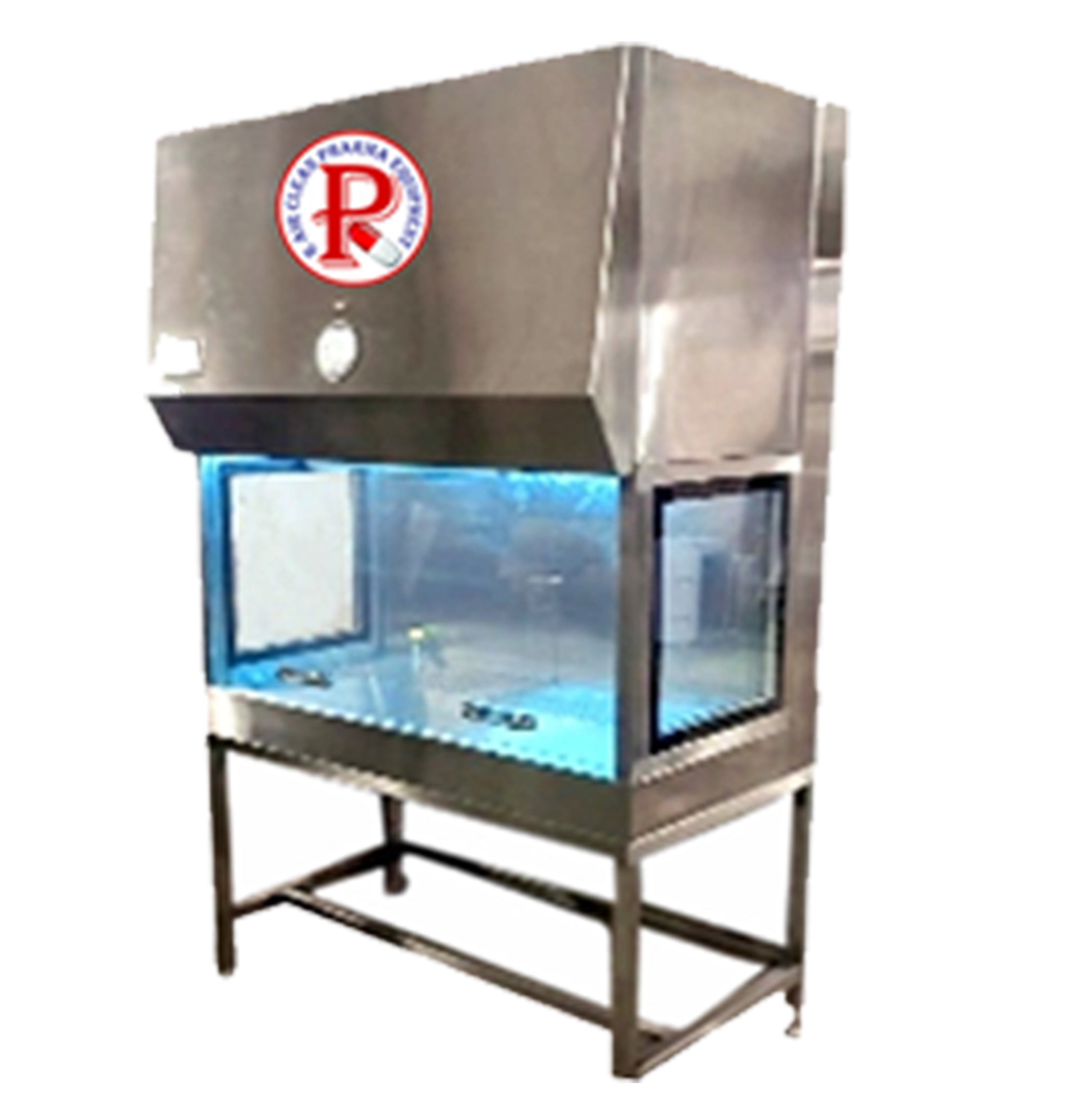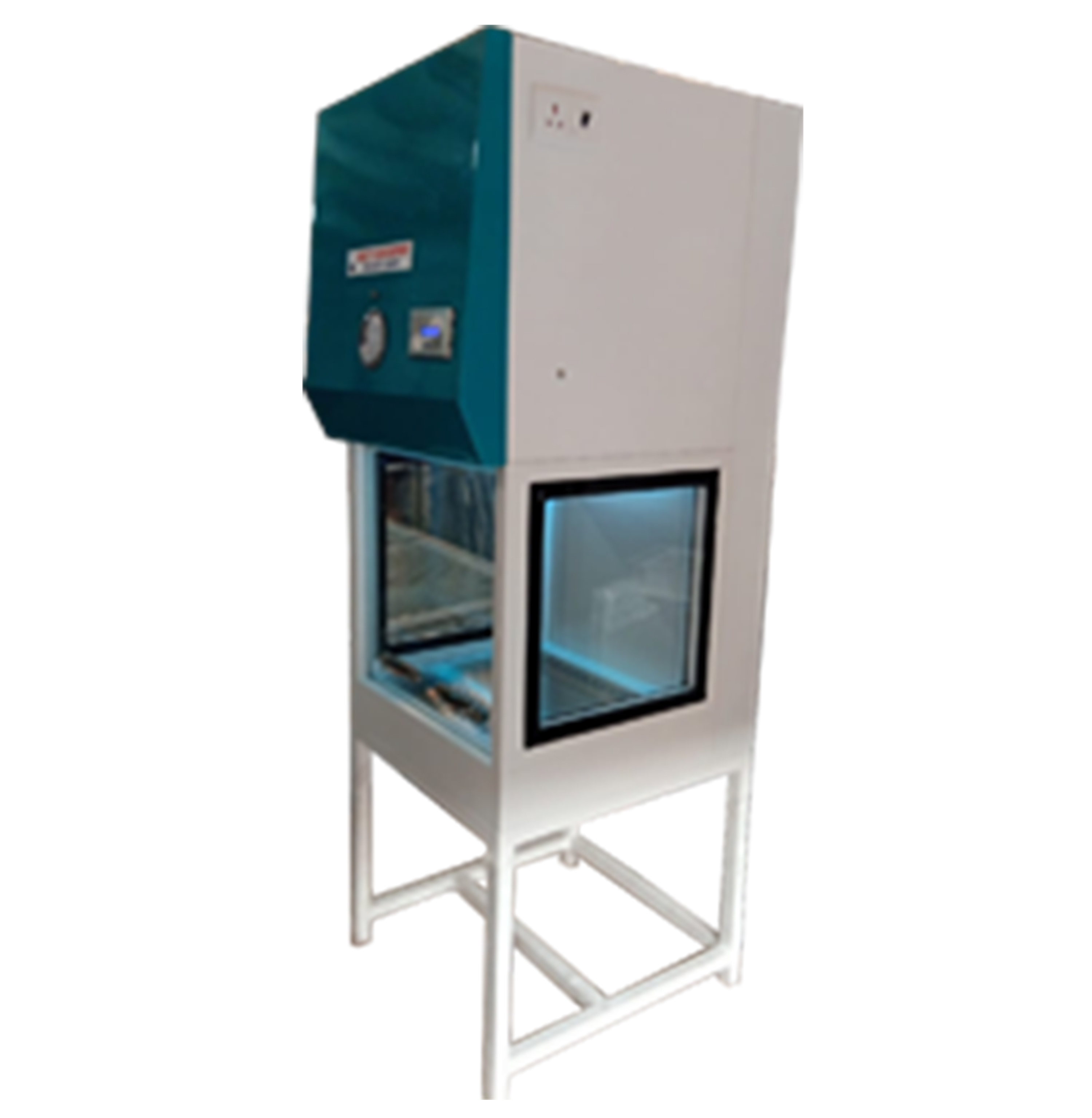

Biological Safety Cabinet range includes a variety of containment products to suit laboratory applications within the academic, pharmaceutical, biotech, healthcare, R&D and industrial sectors. Our advanced biological safety cabinets have been designed with safety and efficiency in mind. User-friendly features and advanced control systems make these cabinets both versatile and reliable. The biosafety cabinets are classified into three categories Class I , Class II or Class III provides a range of solutions for the containment of category.
Biological safety cabinet is designed to provide both a clean work environment and protection to operators who work with biological hazards. It has vertical laminar airflow to create a barrier to airborne particles and microorganisms.High Efficiency Particulate Air (HEPA) filters are used to provide clean air in the work area as well as to the environment through exhaust with the HEPA filter. The air in the cabinet is re-circulated over the work area through the HEPA filter, It is a contaminant-free environmental Protection.
| EQUIPMENT TYPE | EQUIPMENT DIMENSIONS IN FEETS | MM |
|---|---|---|
| BIOSAFETY CABINET | 2X2X2 | 610X610X610 |
| 3X2X2 | 915X610X610 | |
| 4X2X2 | 1220X610X610 | |
| 5X2X2 | 1525X610X610 |
Purposes
The primary purpose of a BSC is to serve as a means to protect the laboratory worker and the surrounding environment from pathogens. All exhaust air is HEPA-filtered as it exits the biosafety cabinet, removing harmful bacteria and viruses. This is in contrast to a laminar flow clean bench, which blows unfiltered exhaust air towards the user and is not safe for work with pathogenic agents. Neither are most BSCs safe for use as fume hoods.Likewise, a fume hood fails to provide the environmental protection that HEPA filtration in a BSC would provide. However, most classes of BSCs have a secondary purpose to maintain the sterility of materials inside (the "product").
Classes
The U.S. Centers for Disease Control and Prevention (CDC) classifies BSCs into three classes.:6 These classes and the types of BSCs within them are distinguished in two ways: the level of personnel and environmental protection provided and the level of product protection provided.
Class I
Class I cabinets provide personnel and environmental protection but no product protection. In fact, the inward flow of air can contribute to contamination of samples. Inward airflow is maintained at a minimum velocity of 75 ft/min(0.38 m/s). These BSCs are commonly used to enclose specific equipment (e.g. centrifuges) or procedures (e.g. aerating cultures) that potentially generate aerosols. BSCs of this class are either ducted (connected to the building exhaust system) or unducted (recirculating filtered exhaust back into the laboratory).
Class II
Class II cabinets provide both kinds of protection (of the samples and of the environment) since makeup air is also HEPA-filtered. There are five types: Type A1 (formerly A), Type A2 (formerly A/B3), Type B1, Type B2 and Type C1. Each type's requirements are defined by NSF International Standard 49,:31 which in 2002 reclassified A/B3 cabinets (classified under the latter type if connected to an exhaust duct) as Type A2, and added the Type C1 in the 2016 standard. About 90% of all biosafety cabinets installed are Type A2 cabinets.
Principles of operation use motor driven blowers (fans) mounted in the cabinet to draw directional mass airflow around a user and into the air grille - protecting the operator. The air is then drawn underneath the work surface and back up to the top of the cabinet where it passes through the HEPA filters. A column of HEPA filtered, sterile air is also blown downward, over products and processes to prevent contamination. Air is also exhausted through a HEPA filter, and depending on the Type of Class II BSC, the air is either recirculated back into the laboratory or pulled by an exhaust fan, through ductwork where it is expelled from the building.
The Type A1 cabinet, formerly known as Type A, has a minimum inflow velocity of 75 ft/min. The downflow air, considered contaminated, splits just above the work surface (the BSCs smoke split) and mixes with the inflow. This air is drawn, through ductwork, up the back of the cabinet where it is then blown into a positive pressure, contaminated plenum. Here, the air is either recirculated, through a HEPA filter, back down over the work zone, or exhausted out of the cabinet (also through a HEPA filter). Sizing of HEPA filters and an internal damper are used to balance these air volumes. This type is not safe for work with hazardous chemicals even when exhausted with a "thimble" or canopy to avoid disturbing internal air flow.
The Type A2 cabinet, formerly designated A/B3, has a minimum inflow velocity of 100 ft/min. A negative air pressure plenum surrounds all contaminated positive pressure plenums. In other respects, the specifications are identical to those of a Type A1 cabinet.
Type B1 and B2 cabinets have a minimum inflow velocity of 100 ft/min, and these cabinets must be hard-ducted to an exhaust system rather than exhausted through a thimble connection. Their exhaust systems must also be dedicated (one BSC per duct run, per blower). In contrast to the type A1 and A2 cabinets, Type B BSCs use single pass airflow (air that does not mix and recirculate) in order to also control hazardous chemical vapors. Type B1 cabinets split the airflow so that the air behind the smoke-split is directed to the exhaust system, while air between the operator and the smoke-split mixes with inflow air and is recirculated as downflow. Since exhaust air is drawn from the rear grille, the CDC advises that work with hazardous chemistry be conducted in the rear of the cabinet.:10 This is complicated, since the smoke split (demarking the "rear of the cabinet") is an invisible line that extends the width of the cabinet (approximately 10-14 inches from the front grille) and drifts as the internal HEPA filters load with particulate.
Class III
The Class III cabinet, generally only installed in maximum containment laboratories, is specifically designed for work with BSL-4 pathogenic agents, providing maximum protection. The enclosure is gas-tight, and all materials enter and leave through a dunk tank or double-door autoclave. Gloves attached to the front prevent direct contact with hazardous materials (Class III cabinets are sometimes called glove boxes). These custom-built cabinets often attach into a line, and the lab equipment installed inside is usually custom-built as well.
